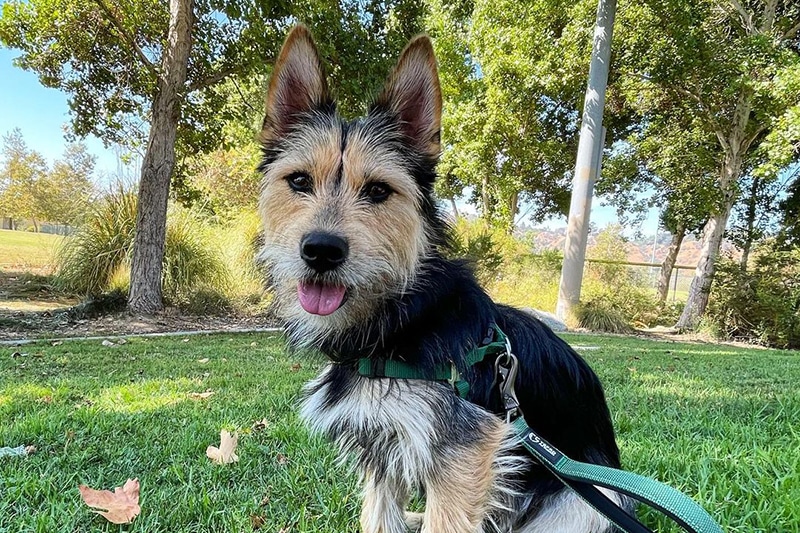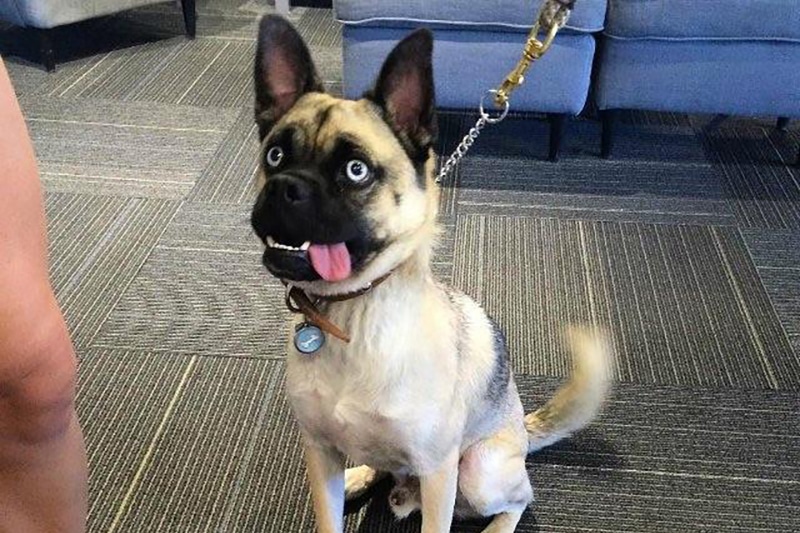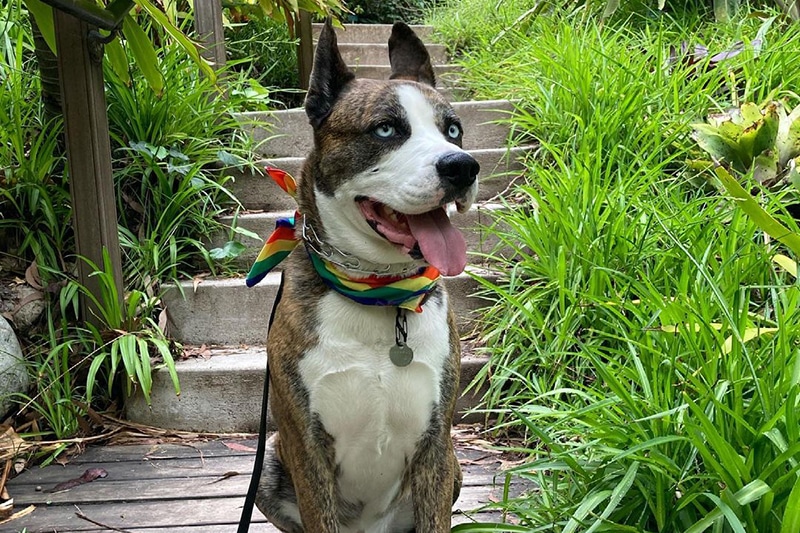The Husky Beagle mix combines endurance, playfulness, and a loving, gentle playmate. These two working dogs aren’t suitable for the elderly due to their energy levels, size and strength. Nor are they suited to apartment living due to their exercise requirements. They’re much better off with a yard and/or regular trips to the nearest off-leash dog park.
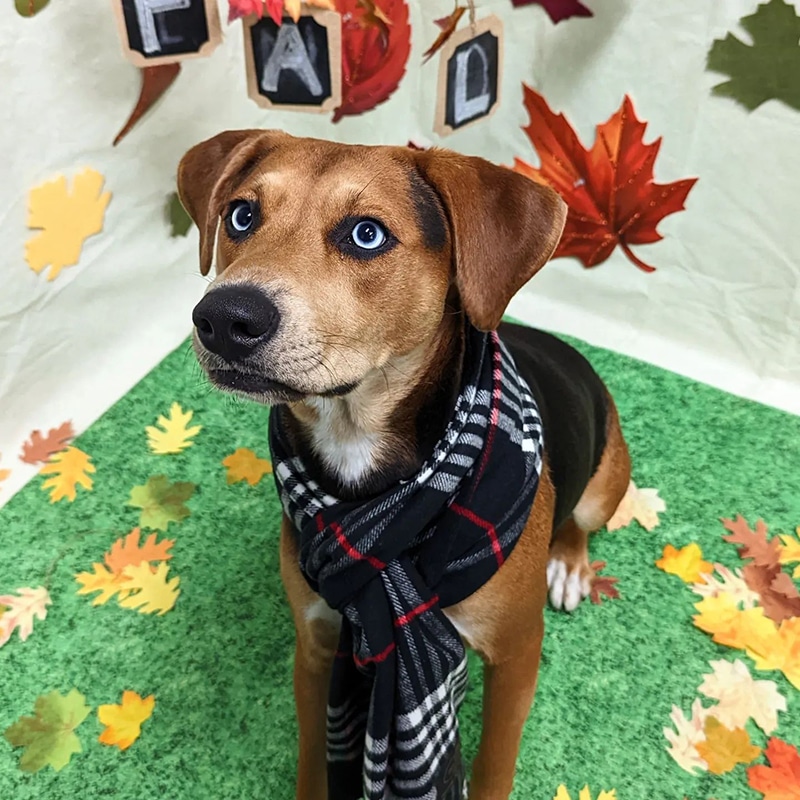
To learn more about the Husky Beagle mix, we’ll take you through the history of both parent breeds to give you a better idea of where the beloved Beagle Siberian Husky comes from. We’ll detail the Beagle Siberian Husky’s temperament, the breed’s health risks, and more – enough information to prepare you to own one of these medium-sized mixed breeds.
Husky Beagle Mix – At a Glance
| Weight: | 16 – 20 inches |
| Height: | 35 – 45 pounds |
| Lifespan: | 11 – 14 years |
| Coat Colors: | Black, grey, brown, red, cream, fawn, white, sable, brindle |
| Temperament: | Stubborn, intelligent, loving, gentle, protective, energetic |
| Most Suitable For: | Active families, active couples, not suitable for the elderly |
What Does a Husky Beagle Mix Look Like?
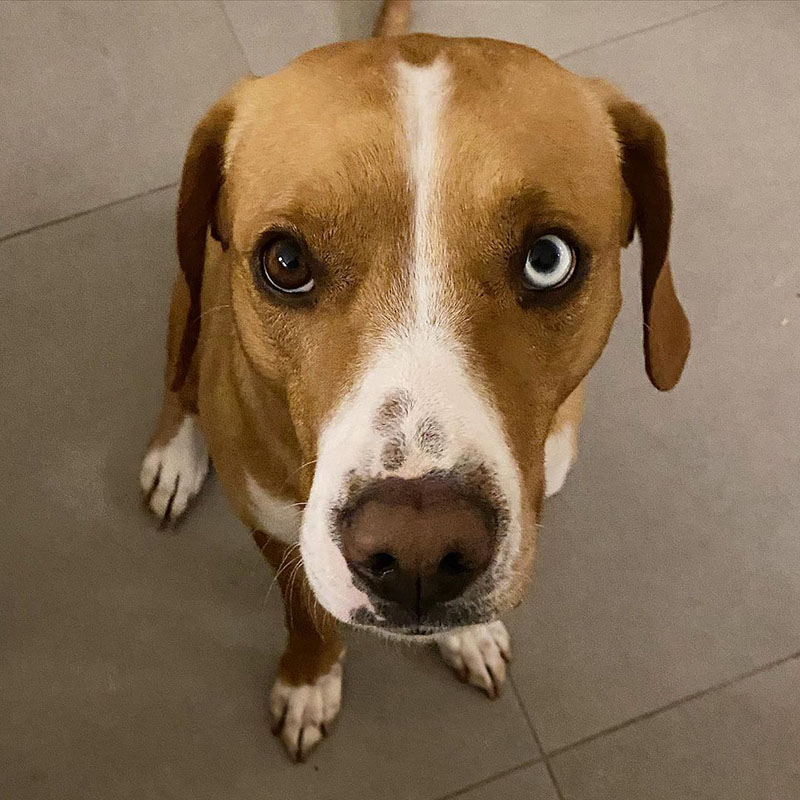
For most people looking for an energetic, intelligent, obedient breed – it doesn’t come much better than the Beagle Husky mix. Breeding a Beagle with Siberian Huskies is sure to produce a funny-looking dog!
Your Husky Beagle mix will likely inherit different parts of its physical appearance from each parent breed. But like most designer breeds, it can be a mystery until the pup displays these characteristics.
Your Beagle Husky may have the blue-and-brown or ice-blue eyes typical of Siberian Huskies. They will likely adopt the Beagle’s forward-drooping ears with the traditional Husky markings. They may also have the upright tail of the Husky.
Like the Siberian Husky, they will likely have a double coat that must be groomed regularly to mitigate the fur-nado that tends to happen when a Husky mix of any sort is left unkempt.
Are you looking for a way to treat your furry friend? Sign up for our newsletter for a chance to win a free month of Barkbox!
The History of the Husky Beagle Mix
The Beagle Siberian Husky mix is a relatively new mixed-breed dog without much documented history. It’s believed that the mix was created in the 1990s, when Beagles were bred to Siberian Husky parents to combine the best of both parent breeds’ in terms of temperament and physical appearance.
Crossbreeding dogs was particularly common in the U.S. during the 1990s and early 2000s, and the Beagle Husky mix was just one of the hundreds of mixes created during this period.
The History of the Beagle
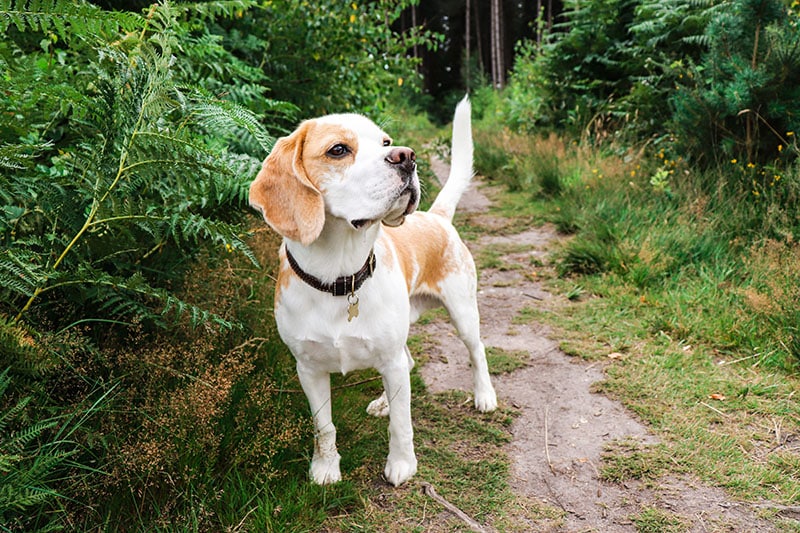
The Beagle is a hound bred in 16th-century England by wealthy Englishmen looking for a hunting companion. The Beagle’s breed standard was developed from three English hound dogs: the North Country Beagle, the Talbot Hound, and the Southern Hound.
Bred for its speed, agility, and sense of smell, the Beagle proved a tremendous hunting dog – its smooth coat allowed it to wick water from its fur and moved quickly even in the rain.
Two hundred years after the inception of the original Beagle, in the 19th century, the breed standard was formalized in the UK and the United States. The Beagle has remained a popular hunting companion ever since for both British and American owners.
How Popular Are Beagles in the United States?
The Beagle was first formalized as a breed by the American Kennel Club in 1885 and has since maintained huge popularity in the country due to its primary utility as a companion pet and hunting dog. However, the Beagle has also adopted roles in military and police functions due to its keen sense of smell – trained in bomb disposal and drug detection.
In 2021, Beagles were the 7th most popular dog in the United States, according to the AKC, making Beagles one of the nation’s most popular breeds.
Who Are Beagles a Good Dog For?
Beagles have lots of energy and are perfectly suited for active families and single individuals. They’re typically too much for the elderly to handle and don’t do well in apartments or cities – their restlessness can result in destructive behavior.
How Did Beagles Come About?
Beagles were first created in the 16th century in England as hunting dogs to accompany English farmers and hunters in their quest for small game. Bred as lightning-quick, agile chasers, the Beagle’s keen sense of smell sets it apart from most other hunting dogs.
When Did We First Cross-Breed The Beagle?
The first attempts to crossbreed the Beagle happened early on in the life of the modern Beagle. The first mixed-breed Beagle was trialed in the 1850s, when the Beagle was crossed with a Scottish Terrier to create a more agile retriever.
More recent crossbreeding of the Beagle has led to several different types of mixed-breed Beagles, such as the Crested Beagle, Beagle Shepherds, and Beagle Pug, most in an attempt to quell the Beagle’s high activity levels with a less-active dog.
The History of the Husky
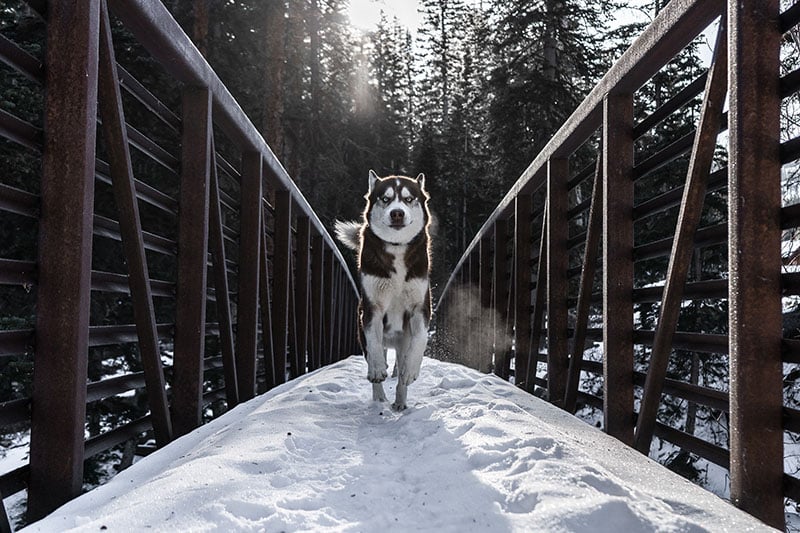
The Siberian Husky was first bred by the Chukchi people, of the Chukchi Peninsula in Eastern Siberia. These remote tundra-ridden people needed a strong, reliable, endlessly-energetic dog to transport people and supplies across the frigid ice and snow of Eastern Russia.
The Siberian Husky’s progenitor is considered the Chukotka sled dog of eastern Siberia – it was from this parent breed that the Siberian Husky was born.
In 1908, the Siberian Husky was imported from Siberia to Alaska, and used to carry supplies and people – in much the same way that it in Siberia – but to gold mines in the Alaskan north. Later, the Husky would become infamous for its role in the Iditarod sled dog race.
How Popular Are Huskies in the United States?
Even though they haven’t been in the United States that long, the Siberian Husky is a phenomenally popular high-energy dog and loyal companion pet.
Though nowhere near as popular as the Beagle, the Siberian Husky ranked 19th in the AKC’s 2021 rankings of most popular breeds. This is likely due to their high level of energy and their double coat making them largely unsuited to most American climates – they are far more popular with our northerly neighbor – Canada.
Because of their size, strength, and overall ownership requirements, Huskies aren’t well-suited for first-time dog owners. Despite this, their beautiful physical features sometimes win out pet owners, which is why they’re still quite popular.
Who Are Huskies a Good Dog For?
The Siberian Husky is a great dog for pet owners with a lot of land to allow them to run or a nearby off-leash dog park. They’re cumbersome pets, so perhaps aren’t well suited to unsupervised proximity to small children (they’ll lumber into them and bowl them over).
They have low levels of aggression and tremendous protective instincts, making them great family dogs but not necessarily great guard dogs. Their energy requirements and size make them prohibitive for the elderly or folks without the necessary land, time, or energy to give the Siberian Husky the life it deserves.
How Did Huskies Come About?
The Siberian Husky was bred by the Chukchi People of the Chukchi Peninsula in Eastern Siberia to transport people and goods across frozen Russian tundra. Eventually, the breed was brought to the United States, where it has since become a popular family pet and maintains working dog status in Alaska and Canada.
When Did We First Cross-Breed The Husky?
There’s little information available about the crossbreeding history of the Siberian Husky. Most Husky owners prefer to keep their purebred parents and create multiple litters of purebred dogs. However, in recent years, there have been many popular crossbreeds.
These include the Labsky (Labrador Retriever Husky), Great Danesky (Great Dane Husky), Pomsky (Pomeranian Husky), and the Ausky (Australian Shepherd Husky). Due to their size, Huskies are often bred with other medium-sized dogs.
How Important Is a Dog’s Temperament to Your Family?
One of the most diverse things about dogs is their overall temperament. There are several predictors of a dog’s temperament. These include their living environment, history, genetics, and lived experience. Some dogs have a more predictable temperament than others – for example, you can expect Huskies, Labradors, and others to be energetic and active, while Pugs are more likely to be more laid-back.
Getting a dog that’s a temperamental match to your family will ensure that conflict between you and the dog remains at a minimum and will help you avoid having to make difficult decisions such as re-homing the animal.
What is the Temperament of the Husky Beagle Mix?
The Beagle Husky has a fantastic temperament. Although it is a very energetic mix breed that requires plenty of mental stimulation, it’s low in aggression and dominance, making it a great choice for a family pet. It may sometimes be stubborn, as Beagles are fiercely independent, but this can be overcome with training and patience.
You can expect the ultimate lovable, gentle giant once it grows up, but a Beagle Husky mix puppy can sometimes be mischievous.
Is The Husky Beagle Mix Friendly?
You can expect your Husky Beagle mix to be a very friendly dog! Sometimes too friendly – as in, follow you to the bathroom, thinking it’s a team sport kind of friendly.
Is The Husky Beagle Mix Easy to Train?
While both dogs have a history as working dogs, you might encounter some initial stubbornness from your Husky Beagle mix. Although after a while, they’ll adapt and become easily-trainable puppies.
How Much Can A Husky Beagle Mix Weigh?
The average weight of a Husky Beagle mix is between 35 and 45 pounds.
How Tall Can A Husky Beagle Mix Get?
Husky Beagles can reach between 16 and 20 inches tall.
Similar Sized Breeds
As a medium-sized dog, there are plenty of similar-sized breeds out there. These include the Border Collie, the Brittany, the Golden Retriever and the Standard Poodle.
Does the Husky Beagle Mix Shed?
Given that it’s likely that your Husky Beagle will have a double coat, you can expect a moderate to heavy amount of shedding throughout the year.
Huskies (and Husky mixes) ‘blow’ their coat twice a year: once in the Spring, to prepare for summer and once in the fall, to prepare for the winter cold.
How Much Exercise Does A Husky Beagle Mix Require?
Thanks to both parent breeds, the Husky Beagle mix is a very energetic dog. It will require about an hour of exercise each day, with plenty of off-leash time. Consider a half-hour walk in the morning and a half-hour walk in the evening, with off-leash exercises as time permits.
How Long Can a Husky Beagle Mix Live?
The average lifespan of a Husky Beagle mix is between 11 and 14 years.
What Health Conditions Could the Husky Beagle Mix Have?
- Hypothyroidism (metabolic imbalance causing by thyroid gland deficiencies)
- Glaucoma (eye disease)
- Cataracts (eye problems)
- Hip Dysplasia (hip joint issues)
How Can You Find a Husky Beagle Mix Puppy For Sale?
Before you try to find a Husky Beagle mix puppy for sale, we suggest that you try adopting a Husky Beagle mix first. Sometimes, Beagle Huskies are a product of accidental breeding and their litters are often put up for adoption.
Check your local vet clinic or animal shelter to see if anyone has dropped off a Husky Beagle to be adopted. Alternatively, you can search online for them at AdoptAPet.com, which allows you to search by local area.
How Much Does a Husky Beagle Mix Puppy Cost?
The average cost of a Husky Beagle mix puppy is between $800 and $1500! Another reason to consider adoption versus purchasing a dog is the overall cost of the process.
If you decide to purchase a Beagle Husky, first read our article on finding and working with a reputable breeder. This will help you avoid puppy mills and spend your money wisely.
Is the Husky Beagle Mix the Right Breed For You?
If you’re looking for an active companion pet, then the Husky Beagle mix might be the perfect option for you.
In our continuing coverage of mixed-breed dogs, the Husky Beagle is certainly one of the most compelling breeds we’ve covered.
Consider carefully whether or not the Husky Beagle mix is the right breed for you. You need to be able to give this active dog the lifestyle it deserves.
We hope our guide has made that consideration a little easier for you!

